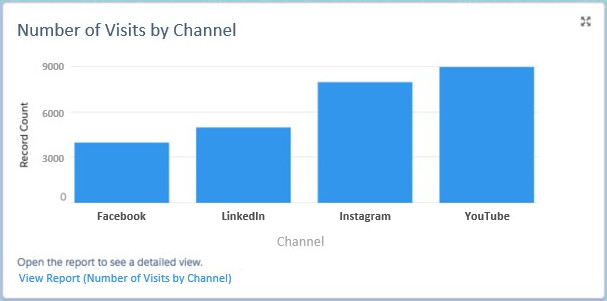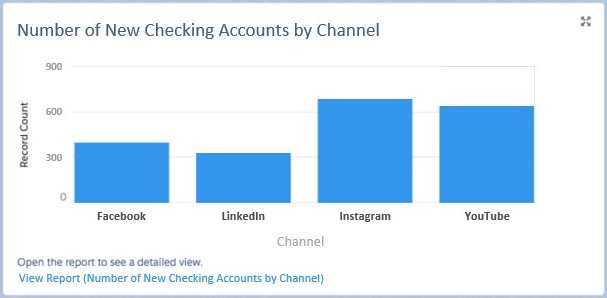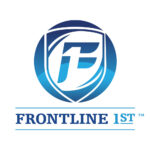Recently, the results of The CMO Survey were released. The CMO Survey is directed by Duke University professor Christine Moorman, who has been a thought leader in the marketing function for decades. The research sampled 316 marketing leaders at for-profit U.S. companies, 96% of whom hold positions at a vice president level or higher.
For digital first marketing leaders, a few intriguing findings resulted from The CMO Survey:
- Quantifying Social Media Value – Marketing leaders expect to invest a larger portion of their budget in social media (+65.8% to 24.3%) over the next 3-5 years. In spite of this, many marketing leaders are still skeptical about the impact that the social media channel has on firm performance. Researchers conducting the survey theorize that skepticism results from inability to quantify the value of social media investments.
- Applying Programmatic Advertising – 94.1% of marketers have started integrating AI in their processes. While this is progress, Moorman notes that “Marketers can increase use of AI to improve marketing ROI”. Among the most underutilized areas she listed was programmatic advertising.
In this article, we will unpack these findings further, discuss how Salesforce can be leveraged to address them, and conclude with five key takeaways.
Quantifying Social Media Value
One of the most straightforward ways to measure the success of a social media campaign is via a tracking URL. For example, let’s say that a bank wants to run a social media campaign to promote its $100 Welcome Offer for opening a new checking account. For three months, the bank’s social media team focuses on boosting its Welcome Offer posts on Facebook, LinkedIn, Instagram, and YouTube. Each post includes a tracking URL that measures number of visitors and how many opened a new checking account. After three months, the results of the campaign are calculated in Salesforce and a dashboard is produced to measure the outcomes.


The marketing team assesses the above results and calculates the ROI ([Net Return on Investment / Cost of Investment] X 100%) for each channel. In the Facebook channel, the Cost of Investment is $100 for the promotional incentive to open the account plus $100 for social media ad costs. The Net Return on Investment is $400 of average quarterly revenue generated by each account minus the $200 Cost of Investment and $25 cost to manage the account throughout the quarter. Thus, the first quarter ROI on each account acquired via Facebook is:
Facebook Q1 ROI = ([$400 – $200 – $25) / $200) X 100% = 87.5%
Similar analysis uncovers that LinkedIn, Instagram, and YouTube have ROIs of 121%, 63% and 66% respectively. ROI separation across channels are a result of differences in social media ad costs and revenue generated from targeted segments. Thus, the marketing team concludes that the LinkedIn channel returns the highest revenue per dollar spent. They invest a larger portion of the budget on LinkedIn advertising going forward and develop content targeting business savvy customers.
Going forward the marketing team measures the campaign without manual calculation by using the Campaign ROI Analysis Report. They leverage the report to ensure they continue to invest in the highest ROI channels, negotiate lower social media ad costs, and experiment with content to attract more profitable checking account customers.
URL clickthrough and conversion are just examples of metrics that can quantify the impact of social media investments. Many other metrics could be leveraged effectively to calculate ROI, as along as they end with conversion to revenue. Some examples include:
- Demonstrations Scheduled + Conversion
- Discovery Meetings Requested + Conversion
- Volume of Content Downloads + % Responding to AE Follow-up + Conversion
Frontline 1st recommends starting with an activity further down the funnel such as demonstrations set or accounts onboarded. This allows the marketing team to build a reliable, easy to understand ROI model for a given social media investment.
Once that is mastered, try leveraging Einstein to build more complex models that start at the top of the funnel and have more steps prior to revenue conversion. If you don’t know where to start, reach out to us. We can develop a custom model to measure the value of your unique social media investments.
Applying Programmatic Advertising
If you have ever seen AMC’s hit series Mad Men, you know how traditional advertising purchases used to work. Advertisers bought spots from publishers in a crony driven market. As the show alludes to, these spots were often secured after several lengthy meetings over cocktails and cigars.
Today the market moves too fast for this approach. Advertisers use demand-side platforms (DSPs) to tap into digital ad exchanges, bid on ad spots that their target customers are seeing in real-time, and display optimal content immediately. Such market efficiency is made possible by AI.
While this sounds simple enough, only one third of marketers are successfully applying programmatic advertising today. This means that it could be a serious competitive edge for Salesforce marketers. Salesforce empowers users to more effectively manage campaigns and optimize advertising outcomes. Let’s look at an example to see how it can be done.
Sandra is a marketing leader at a regional bank and she is launching a new automotive loan product that aims to produce $3M of revenue in year one. To achieve this, Sandra is targeting customers in their twenties who have at least one year of credit history. Sandra has worked with this target market before and has been successful. She wants to use the data that she already has to her advantage on this new campaign.
Sandra uses Salesforce Einstein to build a Lookalike audience. In other words, Einstein assesses all of Sandra’s current customer data to build a list of new potential customers that are similar. Similarities are drawn based on demographics and engagement behavior.
Next Sandra uses Salesforce as a single source of truth to analyze marketing and advertising data. Her research helps her build highly personalized content for her Lookalike audience. For instance, She can see that her audience will require an auto loan with a low down payment and advanced mobile account management. She works with James from her advertising team to develop targeted content that highlights these features.
Sandra and James collaborate to set a campaign budget as well as ROI goals. They also implement measures in the campaign to protect against wasteful spending and fraud. After signoff from their respective department heads, they launch the campaign.
Salesforce programmatic advertising does the heavy lifting from there. As members of the target audience search the web, ad spots are bid on, and optimal content is displayed in real-time to maximize the campaign’s ROI. Sandra and James see the campaign results in their Salesforce dashboard. They adjust the parameters and content to experiment, which enables them to gradually inch the ROI higher. At the end of the campaign, they exceed their revenue and ROI goal. They celebrate and begin planning their expansion campaign for the following year.
If your firm chooses to leverage Salesforce programmatic advertising, Frontline 1st recommends starting with a pilot campaign. This enables your marketing/advertising team to become familiar with Salesforce programmatic advertising and experiment in a low-risk environment. If you need help planning and building the pilot, reach out to Frontline 1st. We can bring expertise and accelerators that ensures you get off on the right foot with Salesforce programmatic advertising.
Key Takeaways
- The CMO Survey highlights that many marketing leaders plan to invest more in social media despite their skepticism and inability to quantify the channel’s value. Marketers can use a tracking URL and Salesforce dashboards to measure website visits/conversion produced by a specific social media campaign. The ROI of the campaign can then be manually calculated or reported automatically using Salesforce’s Campaign ROI Analysis Report.
- Marketers can leverage Salesforce Einstein to measure more complex social media campaigns. Frontline 1st can guide or execute the Einstein model build to ensure success.
- The CMO Survey reveals that marketers are not fully utilizing AI and that capabilities like programmatic advertising can improve ROI.
- Programmatic advertising makes the market more efficient by automatically bidding on ad spots and displaying the most relevant content to the audience in real-time.
- Salesforce marketers can take the following steps to leverage programmatic advertising to improve their ROI:
-
- Use Einstein to assess customer data and create a Lookalike audience
-
- Lean on Salesforce as the single source of truth for marketing and advertising data, then develop targeted content for Lookalike audience
-
- In Salesforce, configure the campaign budget, goals, and fraud safeguards
-
- Launch the campaign using Salesforce programmatic advertising
-
- Utilize Salesforce dashboards to monitor results, experiment, and gradually improve the ROI











